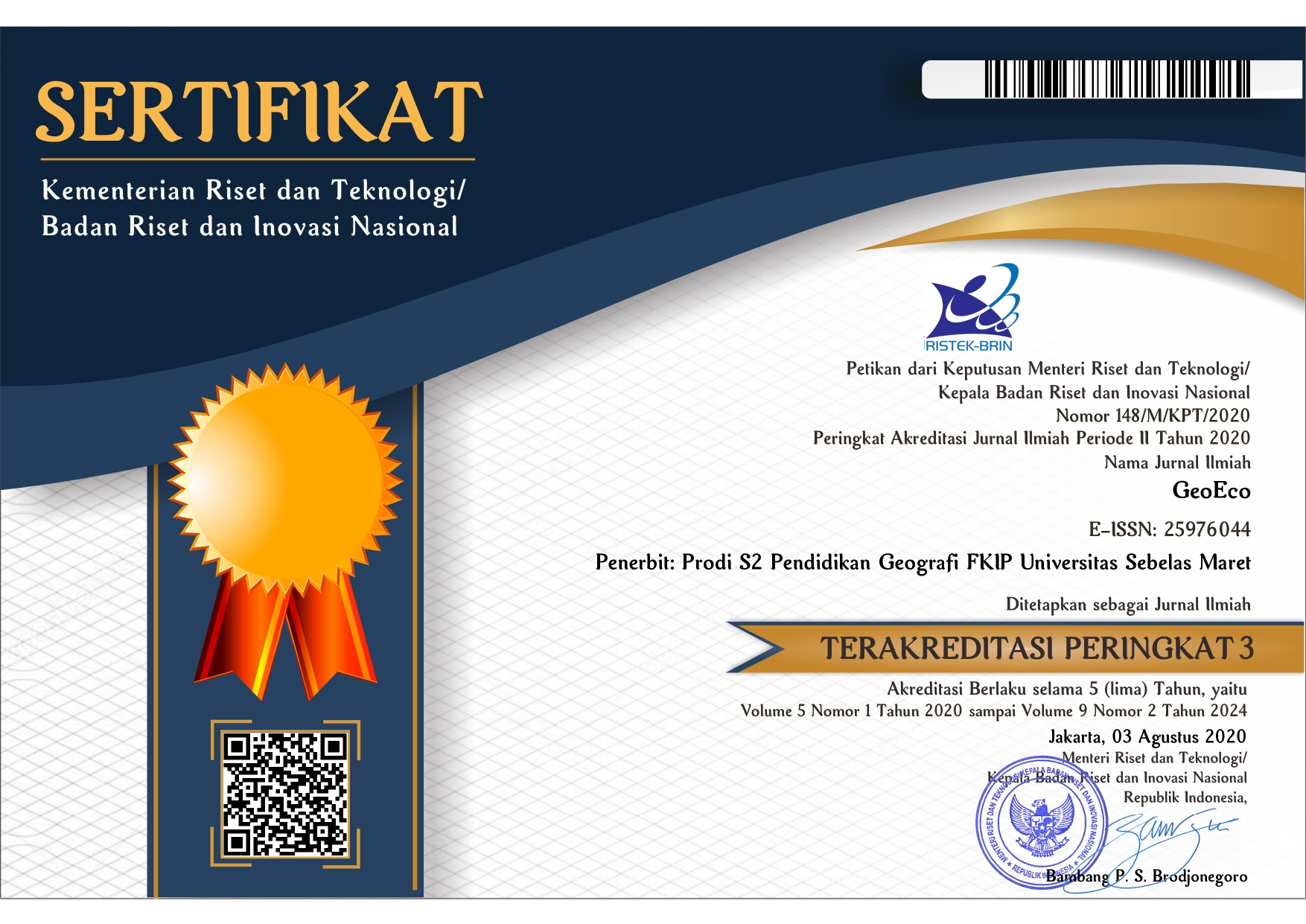POLICY DIRECTIONS FLOOD DISASTER MITIGATION IN KAMPAR REGENCY, RIAU PROVINCE
Abstract
Keywords
Full Text:
PDFReferences
Adams, & Brow. (2020). Understanding disaster mitigation: Strategies and approaches. Journal of Disaster Management, 35(2), 201–215.
Becker. (2021). Fragmentation, commodification, and responsibilisation in the governing of flood risk mitigation in Sweden. Environment and Planning C: Politics and Space, 39(2), 393–413.
Brown, & Sarah. (2021). Land use planning and flood risk management: Evidence from urban areas. Journal of Environmental Policy and Planning, 28(3), 150–165.
Brown, & Sarah. (2022). Community participation in disaster mitigation policies: Best practices and challenges. Community Development Journal, 15(4), 110–125.
Chow. (2019). Applied hydrology. Journal of McGraw-Hill Education. ISBN: 978-0071122502.
Cobbinah, Amoako, & Yeboah. (2023). Informality and the politics of urban flood management. Environment and Planning C: Politics and Space, 41(4), 826–843.
Dibyosaputro, S. (1999). Landslides in Samigaluh District. Indonesian Geography Magazine, 13(1).
Ellis, Anderson, & Brazier. (2021). Mainstreaming natural flood management: A proposed research framework derived from a critical evaluation of current knowledge. Progress in Physical Geography: Journal of Earth and Environment, 45(6), 819–841.
Halim, A., & Putri, E. (2023). Perumusan kebijakan kerawanan bencana banjir: Strategi dan implementasi. Jurnal Kebijakan Publik dan Mitigasi Bencana, 15(2), 128–143. https://doi.org/10.1234/jkpm.v15i2.3456.
Hermon, D., Hamzah, T. A. A. T., Ramadhan, R., Putra, A., Rahmi, L., Sihaini, E., & Sari, N. (2024). Characteristics of community adaptive resilience in overcoming the hazards of flood disaster in Kampar Regency-Indonesia. Geomate Journal, 27(122), 71–78.
Hermon, D. (2015). Geografi bencana alam. Jakarta: PT Rajagrafindo Persada.
Kura, A., Tanimu, J. R., & Aniekwe, P. C. (2023). Community awareness and education for flood risk reduction: A case study of Nigerian communities. International Journal of Disaster Risk Reduction, 84, 103465. https://doi.org/10.1016/j.ijdrr.2023.103465.
Masud, M. M., Ahmed, K. S., & Raza, A. (2021). Community resilience in flood-prone areas: The role of local preparedness and response mechanisms. International Journal of Disaster Risk Reduction, 61, 102280. https://doi.org/10.1016/j.ijdrr.2021.102280.
McGowran, & Donovan. (2021). Assemblage theory and disaster risk management. Journal of Progress in Human Geography, 45(6), 1601–1624.
Rahman, A., Ali, S., Khan, M. A., & Ahmed, K. (2022). Rainfall variability and river water levels: Key indicators of flood risk in coastal regions. Journal of Hydrological Sciences, 15(2), 78–92.
Samela, C., Troy, T. J., & Manfreda, S. (2017). Geomorphic classifiers for flood-prone areas delineation for data-scarce environments. Advances in Water Resources, 102, 13–28.
Sugiyono. (2019). Quantitative, qualitative, and R&D research methodology. Bandung: Alfabeta.
Uddin, Haque, & Khan. (2021). Good governance and local level policy implementation for disaster-risk-reduction: Actual, perceptual and contested perspectives in coastal communities in Bangladesh. Disaster Prevention and Management: An International Journal, 30(2), 94–111.
Ward. (2021). Principles of hydrology. Journal of McGraw-Hill Education. ISBN: 978-0071289181.
Weichselgartner, & Kelman. (2015). Geographies of resilience: Challenges and opportunities of a descriptive concept. Journal of Progress in Human Geography, 39(3), 242–249.
Refbacks
- There are currently no refbacks.












.png)

